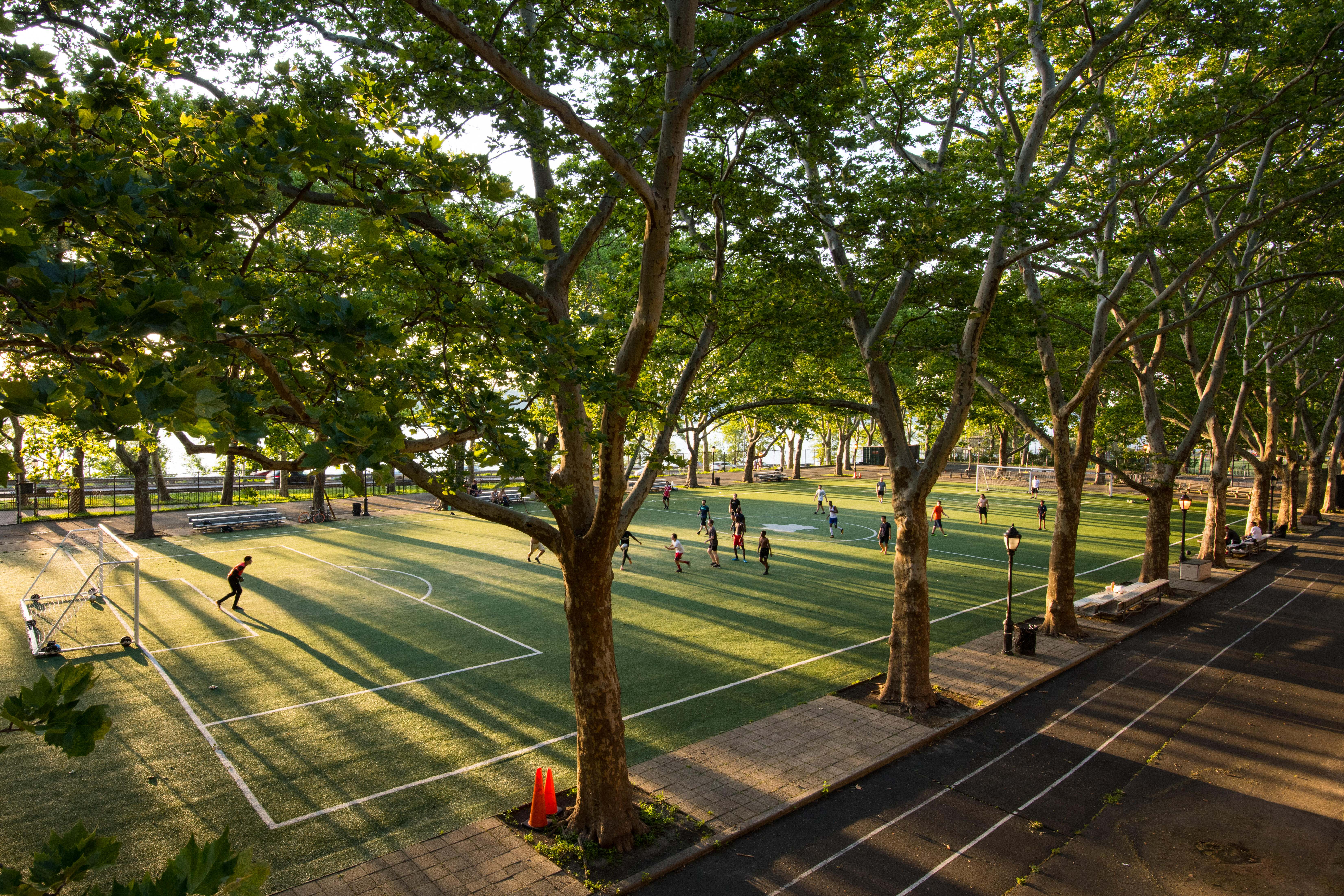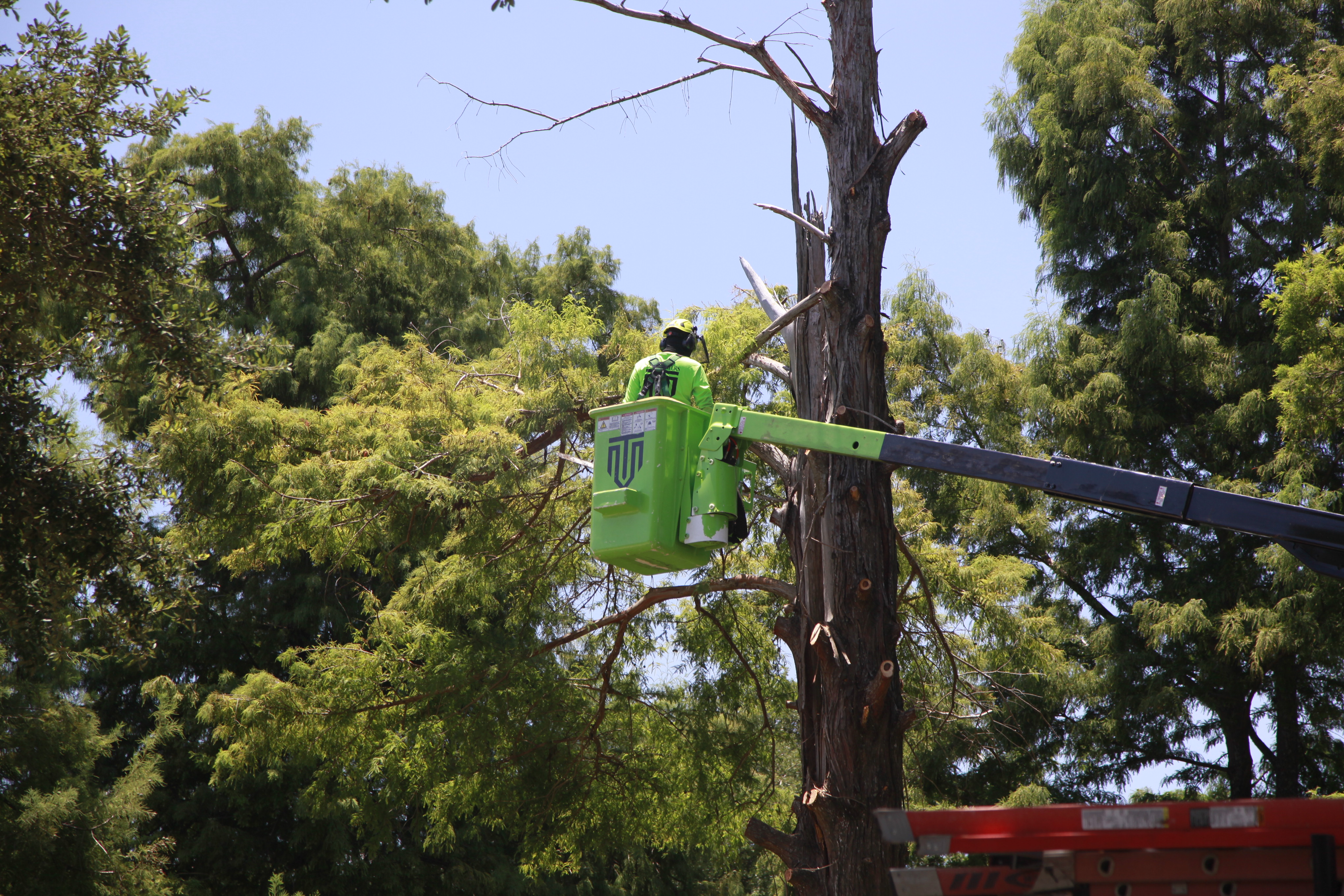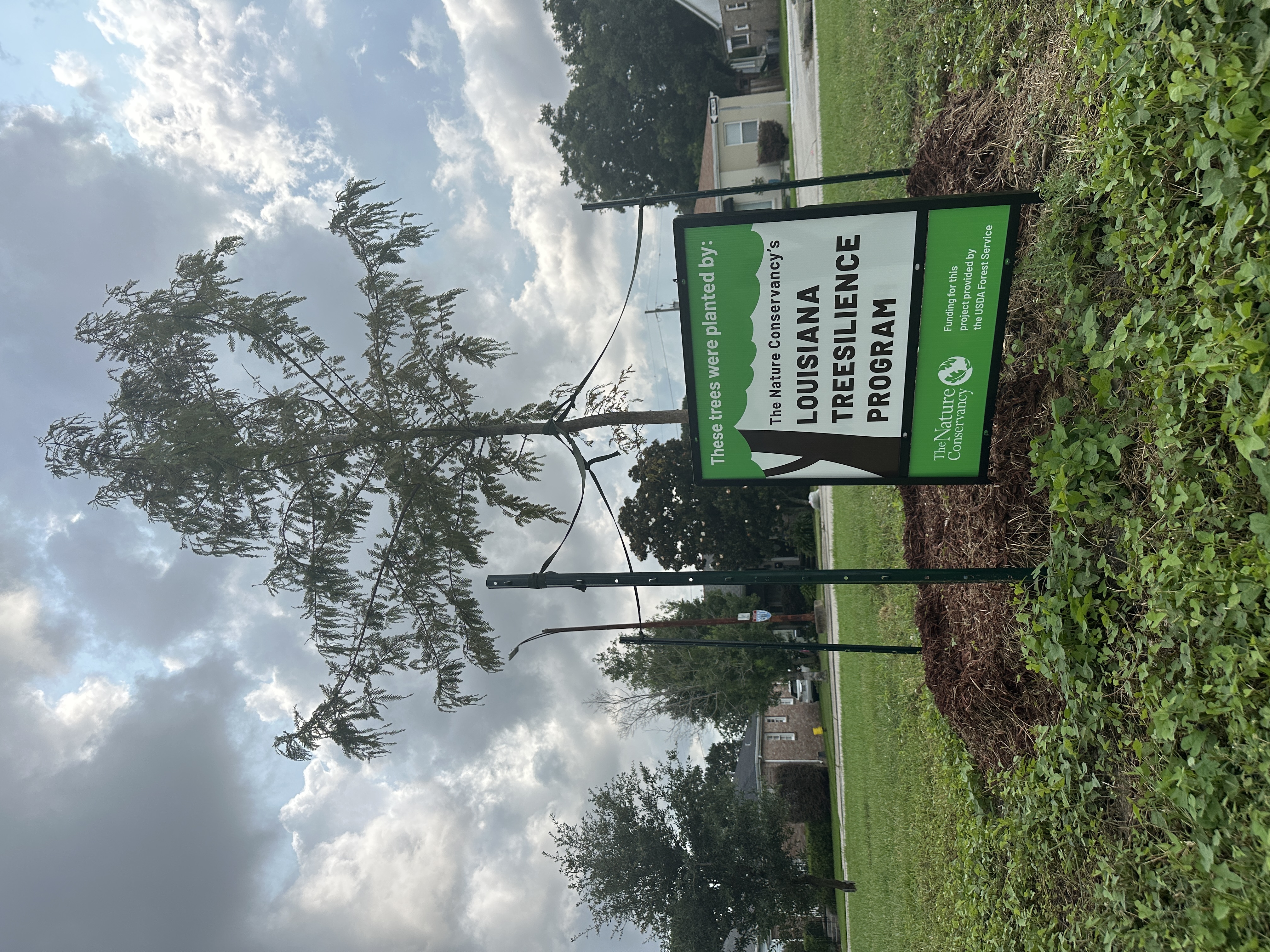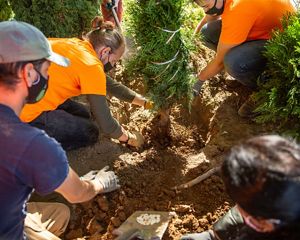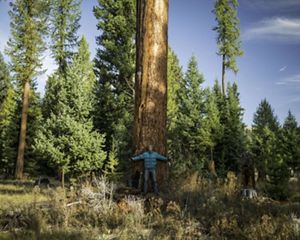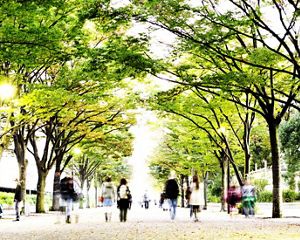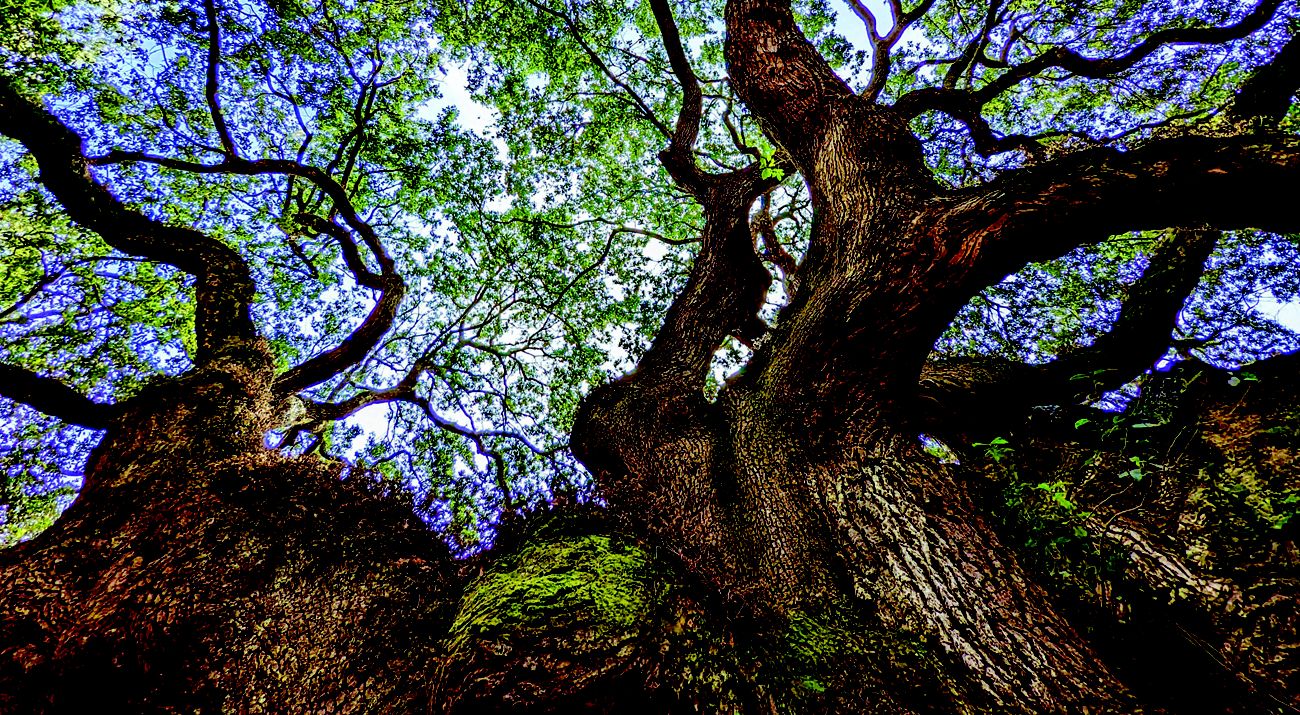
Trees have the extraordinary ability to improve our lives. They conserve energy, absorb storm water, and provide cooling shade for people and habitat for wildlife. In Louisiana, they also help our cities become more resilient in the face of extreme weather.
But urban trees and the communities they protect face many challenges, including destruction from hurricanes, droughts, floods and pests. So, The Nature Conservancy has stepped up, launching Louisiana Treesilience, an urban forestry initiative that helps communities build and maintain a sustainable tree canopy.
Louisiana Treesilience is a collaborative program that meets communities’ greatest forestry needs, which can include tree plantings, canopy assessments, urban forestry planning, hazardous tree removal, tree maintenance and canopy restoration.
Program Overview
Louisiana Treesilience is administered by TNC with generous support from public and private donors. It launched in 2024, thanks to a three-year grant from the USDA Forest Service and support from the Louisiana Department of Agriculture and Forestry. The initial focus was to provide relief to the 22 parishes most affected by the 2020 and 2021 hurricane seasons. The program will expand across the state as funding allows.
Louisiana Treesilience works with local governments, nonprofit organizations and communities of all sizes. The program collaborates with communities to ensure their needs are met and the projects have the maximum conservation impact. Louisiana Treesilience funds each project and oversees all contracting to ensure its success.
Impacts of Change
The 2020 and 2021 hurricane season featured a succession of devastating storms that caused destruction across a wide swath of South Louisiana. Hurricanes Ida and Laura, both Category 4 storms, made landfall in Louisiana with record-breaking 150 mph winds.
Communities suffered billions of dollars in damage. Some of that damage included massive loss of forest canopy, a front-line defense for urban areas in the face of severe weather.
Science tells us that hurricane intensity will only increase over the next 50 years with stronger winds and storms that move further inland and linger longer over our communities. Louisiana Treesilience is a movement to help buffer cities from these impacts while empowering communities to manage their urban forests.
When communities replace lost trees and save existing mature trees, they create a strong, adaptive urban forest that not only protects neighborhoods from storms but also reduces temperatures and flooding in our cities and improves air and water quality. In short, healthy trees make cities more livable and improve our quality of life.
Project Focus
The Louisiana Treesilience Program focuses on restoring and maintaining public trees—in parks, along roadsides and on properties owned by schools, cities, parishes, neighborhood associations and churches. The program works closely with public entities and organizations to ensure it meets their highest needs and results in the most resilient tree canopy possible.
(Click each box to learn more about TNC's Louisiana Treesilience Initiatives.)
Bring Treesilience to Your Community
Since 2024, Louisiana Treesilience partnered with seven public entities in seven parishes. The program is still accepting applications, to be reviewed on a rolling basis, for projects that will be completed by February 2026. If you are unsure of your community’s needs and how Louisiana Treesilience can help, please contact us to start a discussion. TNC will announce when a round of funding is closed and when new project opportunities become available. Check back frequently and don’t wait to apply!
HOW TO APPLY
Review the information below to complete your application. TNC will announce when a round of funding closes and when new opportunities arise.
- Before you apply, review the LTP Program Guidelines to ensure your project meets requirements (including completion by 2/2026).
- Use using the Application Guide and review our List of Recommended Species to prepare your application in advance.
- Prepare a budget informed by recent quotes. Use our example budget template to get started.
- Fill out our online Treesilience Project Application.
Have questions? Contact Amanda Takacs, TNC’s Community Forest Conservation Coordinator at amanda.takacs@tnc.org or 330-421-0013).
Building Resilience One Tree at a Time
Although Louisiana Treesilience is a newer program, we hit the ground running. In its first year, it has made large strides towards improving urban forest resilience in south Louisiana. Get real time project information about Louisiana Treesilience projects around the state and read the linked stories below to see projects completed to date and for ideas on how the program can benefit your community.
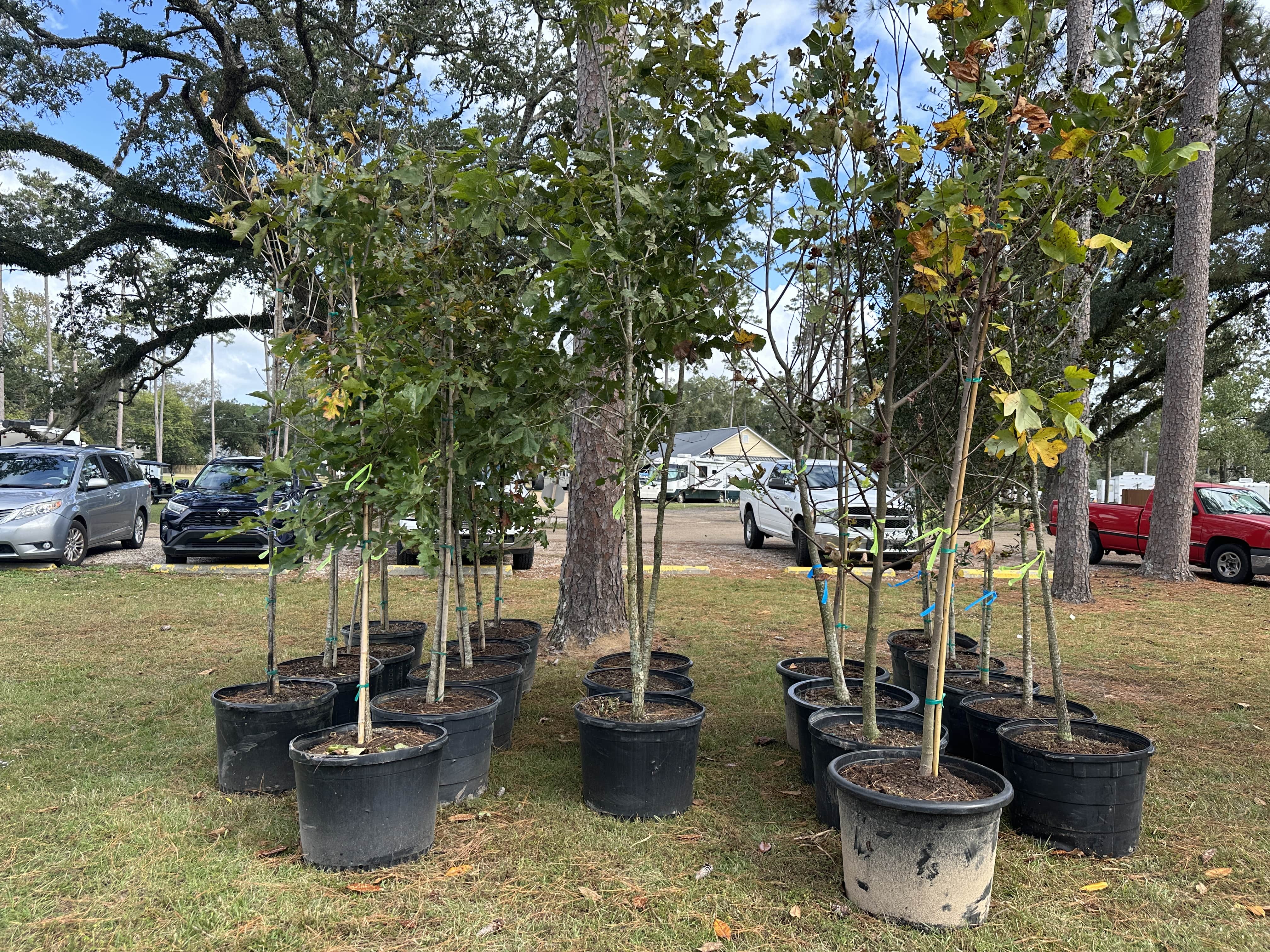
May 17, 2025
Louisiana Treesilience celebrates one year of building storm-ready communities.
This summer, new oak trees provide shade and improve air quality for residents using the walking trails and picnic areas in a popular DeRidder park. On a busy street in Alexandria, new magnolia trees brighten the landscape while reducing air temperatures in the city’s downtown. Thanks to The Nature Conservancy’s Louisiana Treesilience program, these trees and many others will help communities be more storm-ready at the beginning of hurricane season.
Over the past 12 months, Louisiana Treesilience completed four major projects, with five other active tree plantings in progress, in communities devastated by storms in 2020 and 2021. Funded by a three-year grant from the USDA Forest Service, the program has planted nearly 600 large trees and removed 19 dead or dying trees that were potentially hazardous.
These projects, which serve more than 60,000 Louisiana residents, mitigate the effects of recent hurricanes by both removing hazardous trees and strategically planting native species to Louisiana Treesilience Celebrating one year of building storm-ready communities, one tree at a time reduce urban temperatures. “The trees also provide a buffer from storms, manage flooding and improve quality of life,” says Amanda Takacs, TNC’s Louisiana community forest conservation coordinator.
“Treesilience allows us to employ conservation practices where people live, work and recreate,” says Seth Blitch, TNC’s Louisiana director of conservation. “Also, not everyone has the opportunity to spend the day in nature, so bringing it to municipal areas can strengthen a community’s bond with the natural world.”
In DeRidder, the city already is seeing the benefits. “The park is full of people every morning, with the walking trail and the pickleball court,” says Tommy Landry, DeRidder’s director of public works. “To bring children out to play, if there are no shade trees, they won’t stay long.”
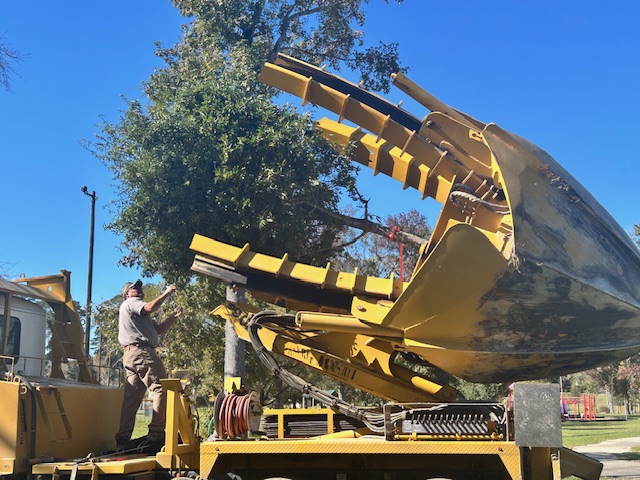
January 16. 2025
TNC Louisiana Treesilience plants 25 trees in DeRidder’s West Park.
When Hurricane Laura roared ashore in 2020, the City of DeRidder found itself in the storm’s crosshairs. The Category 4 hurricane pummeled DeRidder with more than 100-mile-per-hour winds, dramatically altering the look and feel of the small city, home to nearly 10,000 people.
West Park, DeRidder’s largest community park, lost 300 trees. But that was just the start.
“We lost hundreds of trees in Laura, but then as time went along, we lost at least 200 more that were dying from damage caused by the hurricane,” said Tommy Landry, DeRidder’s Director of Public Works. “And they’re still dying today.”
Replacing that many trees is a tall order for a city of DeRidder’s size, but letting the urban canopy remain bare wasn’t an option, Landry said.
“I had been trying for about a couple of years to find grants and programs that could help us put trees back in,” he said. “It seemed like everywhere I went was a dead end except for one small grant we got from Keep Louisiana Beautiful.”
Then Landry, through the Louisiana Main Street Program, learned about The Nature Conservancy’s Louisiana Treesilience Program. Funded by a three-year grant from the USDA Forest Service, LA Treesilience is working to replace hundreds of damaged and lost trees in areas that were devastated by hurricanes in 2020 and 2021, and to create a front-line defense for urban areas in the face of severe weather. Treesilience works with local governments, non-profits and communities of all sizes.
The program meets directly with community members to learn about their specific needs and desires to restore their urban tree canopy. Then, LA Treesilience not only funds the project, but also oversees all contracting and work to ensure its success. This approach means that the local community does not need to spend crucial staffing and resources to manage the grant.
In DeRidder’s West Park, LA Treesilience, managed by Amanda Takacs, community forest conservation coordinator for TNC Louisiana, made a $64,000 investment, planting 25 large cypress, willow oaks and live oak trees, all of which were 8 to 12 years old. It also removed 10 large dead or damaged trees, which could have been hazardous in the popular park, home to walking trails, a pickleball court, a swimming pool, ball fields and picnic areas, Landry said.
Of that $64,000 investment, DeRidder didn’t have to pay a dime.
Grown and transplanted by Wilkinson Tree Farm in Iowa, La., the new trees were planted with a high-tech spade truck, which looks like a giant claw machine from an arcade. Large enough to be an instant addition to the park’s tree canopy, the trees have impressed city residents, Landry said. “It’s awesome. I can’t tell you how many people have complimented the new trees,” he said. “Treesilience is a true blessing.”
Even before TNC started working with DeRidder, the city was putting its own funding toward restoring the hurricane-damaged municipal tree canopy. “We started budgeting to put in 25 trees a year, which is a hefty cost for our taxpayers, but we know what that investment will mean for the city,” he said. “We spent $50,000 for 25 trees; the trees were $2,000 each, each with a six-inch diameter base. We did not want to waste time with little bitty trees. We needed to get our shade canopy back in the park.”
Combined with LA Treesilience’s plantings, the city has added a total of 80 new trees in West Park in two years, including five provided by the Keep Louisiana Beautiful grant.
“The park is full of people every morning, with the walking trail and the pickleball court,” Landry said. “To bring children out to play, if there are no shade trees, they won’t stay long.
Takacs has worked closely with Landry through every step of the process. “She has been great to work with,” he said. “She lets you choose everything and then she makes it happen. It’s a big burden off of any city.”
Landry sees this work as a long-term investment in his community. “I am about to have my first grandchild,” he said, “and when she gets old enough to go to the park, I want her to know that her grandfather worked to plant these trees.”
Support This Work
TNC hopes to expand Louisiana Treesilience’s reach beyond hurricane affected areas to benefit local communities around the state. This can only happen if we secure a more permanent funding stream. Contact us at 225-338-1040 or lafo@tnc.org to join our efforts to rebuild public tree canopies across the Pelican State.
Educational Resources
In 2024, Louisiana Treesilience hosted an Urban Forest Climate Resilience Workshop to help communities better understand and prepare their urban canopy. Experts in the field of urban trees and storm resilience shared information about the newest technology to help participants understand our community tree priorities.
View the video links below to learn more about how to make your urban forest more climate resilient.
Session 1
What to Expect: Future Climate Impacts on Our Urban Trees (Amanda Takacs)
Session 2
Factors that Contribute to Tree Failure in Tropical Storms (Andrew Koeser, Ph.D.)
Session 3
BREC’s Connected Environments: Imagine Your Parks 3 (Reed Richard)
Session 4
Smart Solutions for Resilient Urban Forests: Leveraging Technology for a Sustainable Urban Forest (Joshua Behounek)
Session 5
Readiness, Response and Recovery: Manging Trees With Storms in Mind (Darren Green)
Session 6
Rebuilding After the Storm - Restoration Pruning for Storm-Damaged Trees (Andrew Koeser, Ph.D.)
Let's Build Something Big
Help us expand Louisiana Treesilience’s reach beyond hurricane affected areas to benefit local communities around the state.



